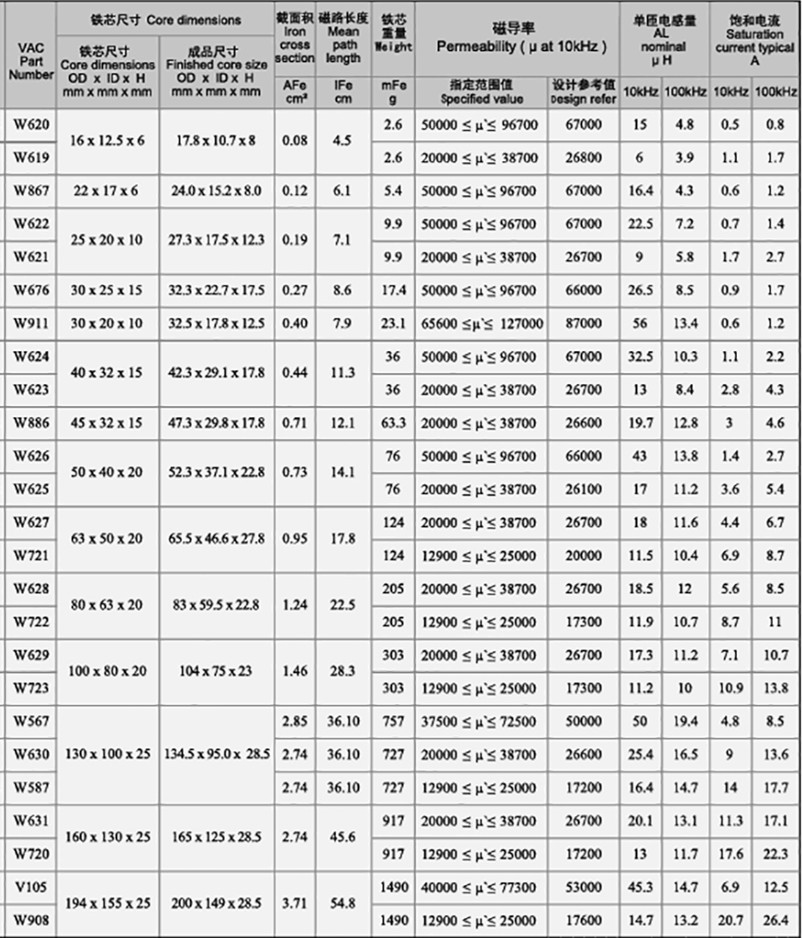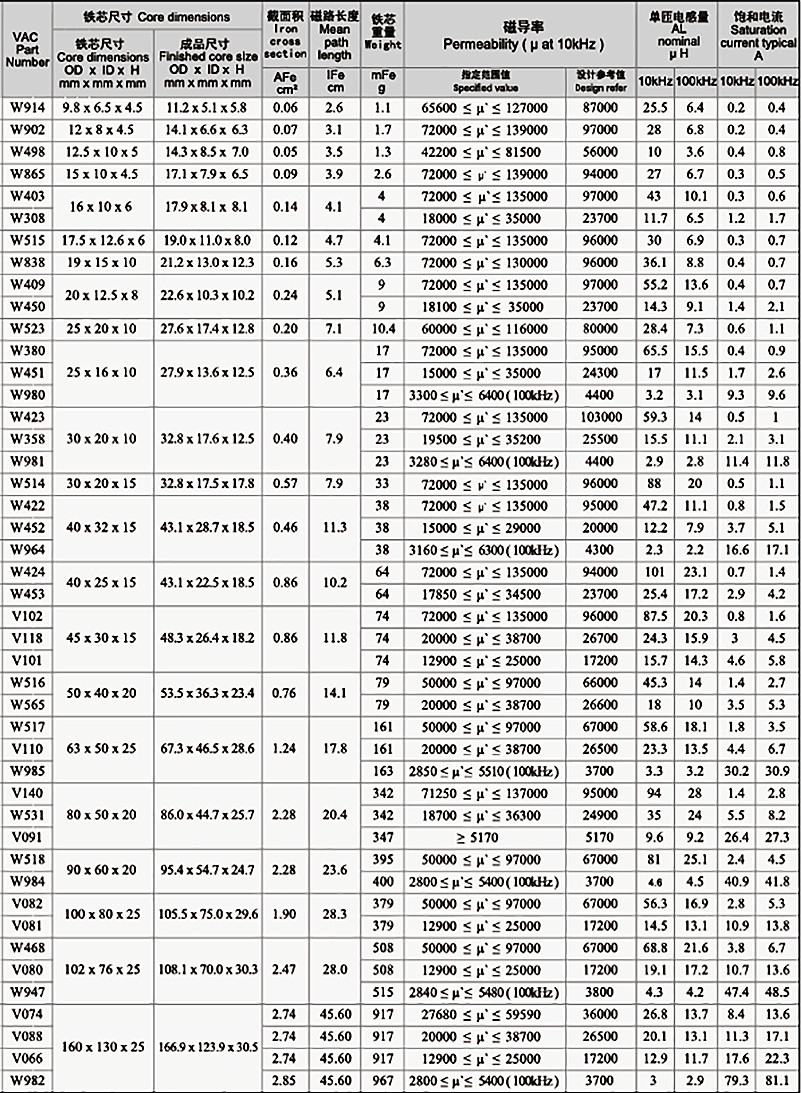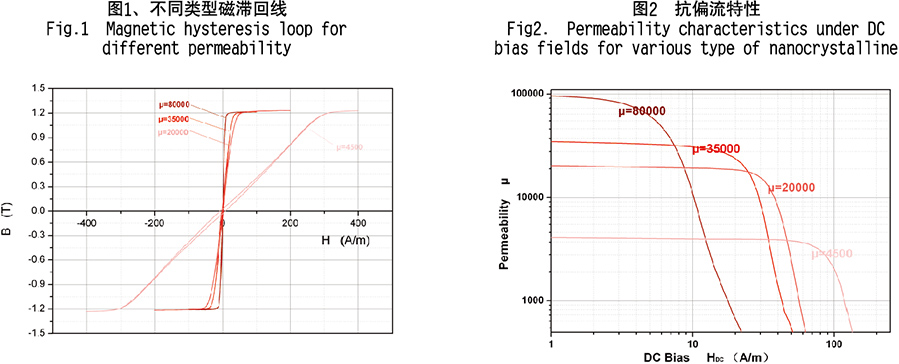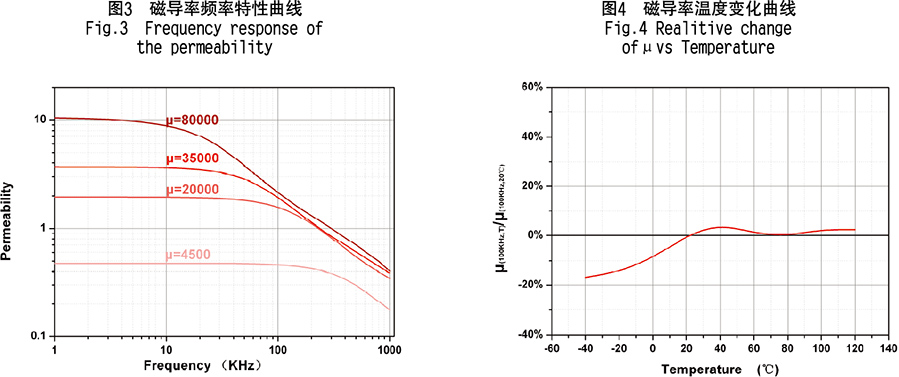
Introduction:
The EMC standard of frequency range of 150KHz-30MHz on restraining the conducted CM EMI are becoming more serious in
the application. CM inductance & filter capacitor were used to restrain the CM EMI. Ferrite core or common Nanocrystalline core
are popular in domestic market as common mode choke cores, but high high-frequency volume and impedance reduction from
150KHz to 30MHz due to the operating frequency limitation makes these cores unworkable. In this ease, we developed
advanced higher property Nano-crystalline common mode choke cores as solution for EMC common mode choke cores requirement,
and were applied to the EMC of switch power modules, UPS power supply, communication power supply, inverter, transducer,
home appliance.
Characteristics
•High initial permeability: 5~20 times higher than ferrite core
• High saturate induction density: 2-3 times higher than ferrite core, not easy be saturated in high current fields
• Excellent temperature stability-with the serving temperature from -55 to 130"C for a long time. The Curie temperature is higher.
The properties are not changeable easily even in unstable working temperature.
• Good frequency flexibility-better controlling to the noise in different frequencies.
• Higher anti-unbalanced-current: Specially made Nano-crystalline EMC Common Mode Choke Cores can guarantee 104 permeability
when resist 80A/m unbalanced current bias field.

Application Area:
• Protection for accuralc clcctronic equipment
• Common mode jam filtering for EMI power
• Common filtering in single phase or three phase circuit
· Switching power supply
· Photovoltaic Inverter
· Drive
· EMC filter
· Welder
· Wind power
·electric car
· Cooker
·ups
Specification:


Note:Welcome other specification and Customer required dimension is available
Feature:
High of Bs, high values of u, having a high resistance saturation capacity, inductance can
effectively reduce the size, shown as a common mode inductor core static hysteresis loop 1;
· Excellent frequency characteristics, as shown in Figure 3 the core permeability versus frequency curve;
Stable temperature characteristics of the core magnetic permeability change with temperature
change curve shown in Figure 4;
Small magnetostrictive coefficient, low noise;



